
沿河 Dwelling in the invisibility
「沿河」指向人沿著河建造聚落、亦是殖民者前進的路線,也是這次展覽的思考和身體路徑。
「Dwelling in the invisibility」Dwelling為棲居,Invisibility為不可見;不可見意味存在、眼光無法抵達,兩者指向「存在」的雙重性、觀看經驗之外的存在,之外並非指遙遠他者,而是被日常生活的擬像遮蔽之現實,往往需倚靠記憶帶領穿越。當島嶼東部由於山脈,日落較早,西部的城市也由於高樓、河岸堤防,而接著東部的節奏,提早日落。島嶼現代城市結構,源自多個帝國重複複製他們的慾望,以及在地人轉而對文明順從依賴,逐漸對自然場所失去方向感、錯亂歷史記憶、破碎的認同。
Civilizations have flourished along rivers, and colonizers have also pushed forward following the same routes. This exhibition ponders on this and applies it to form a physical path. The “invisibility” in “Dwelling in the Invisibility” suggests a place that exists but can’t be perceived visually,and “dwelling” is associated with place of residence; thus, the two components point at an existence that is two-fold by nature and one that transcends beyond visual experiences. Not reaching for the distant other, the everyday reality that is actually a simulacrum is highlighted, with memories depended on for guidance in pushing through. The sun sets a little earlier in the east side of this island because of the mountains that separate it from the west, and the cities in the west then follows the rhythms of the east, with the sun also setting earlier due to high-rise buildings and river embankments. The modern urban structure of the island is derived from repeated replications of desires executed by several imperial colonizers, and as local people succumbed to and became depended on civilization, they slowly lost their navigation skills for nature, with their memories for history disoriented and their sense of identity fragmented.
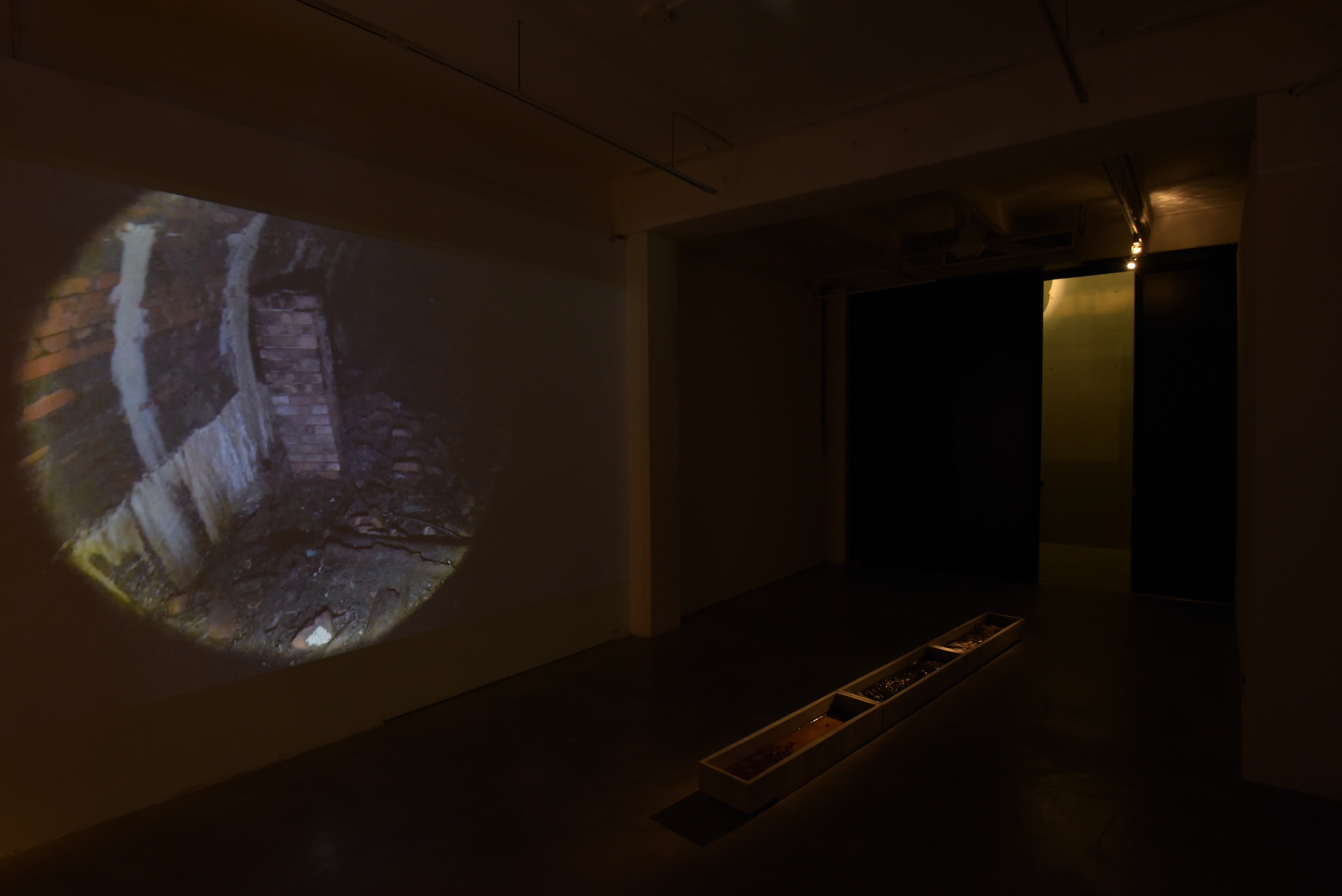
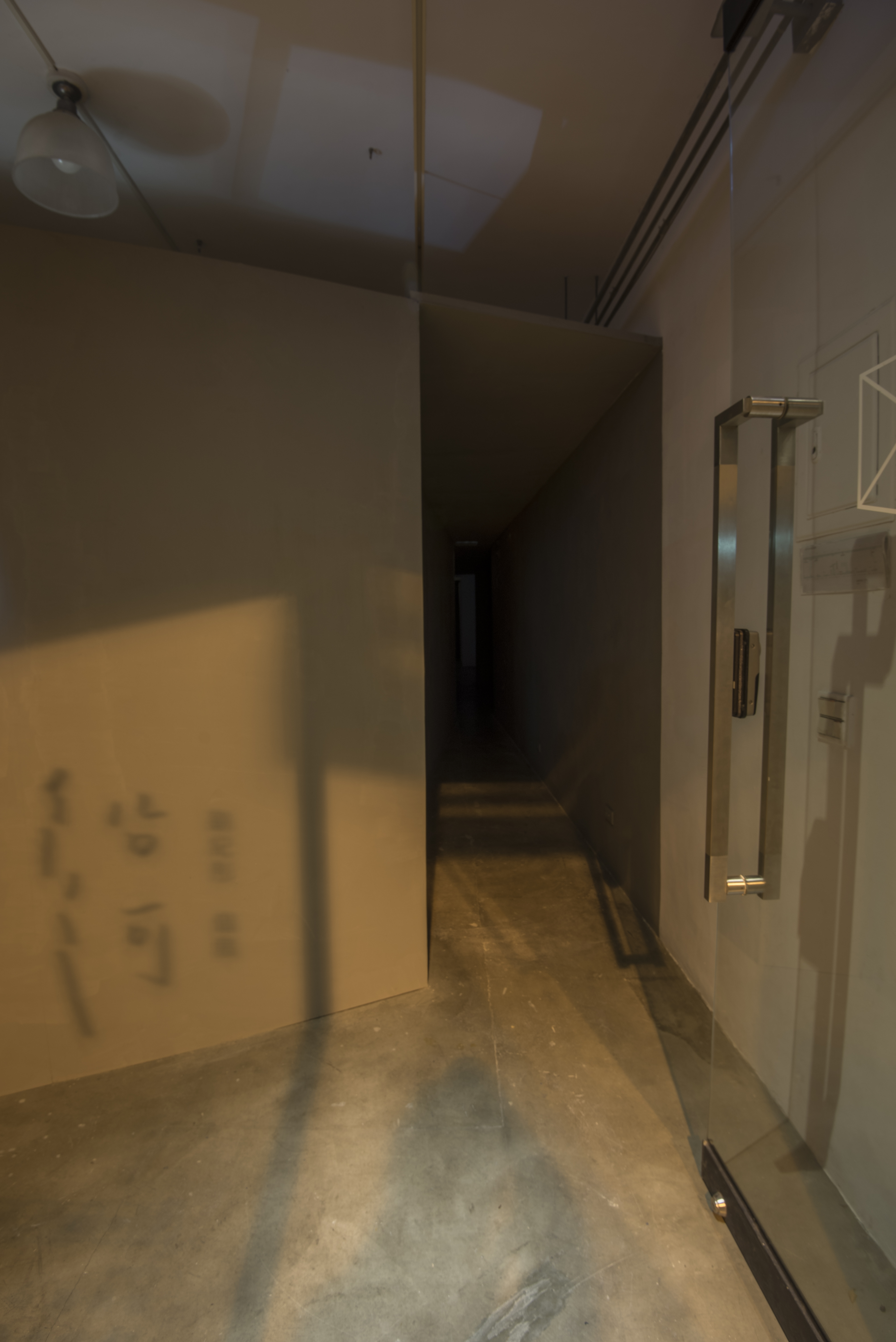
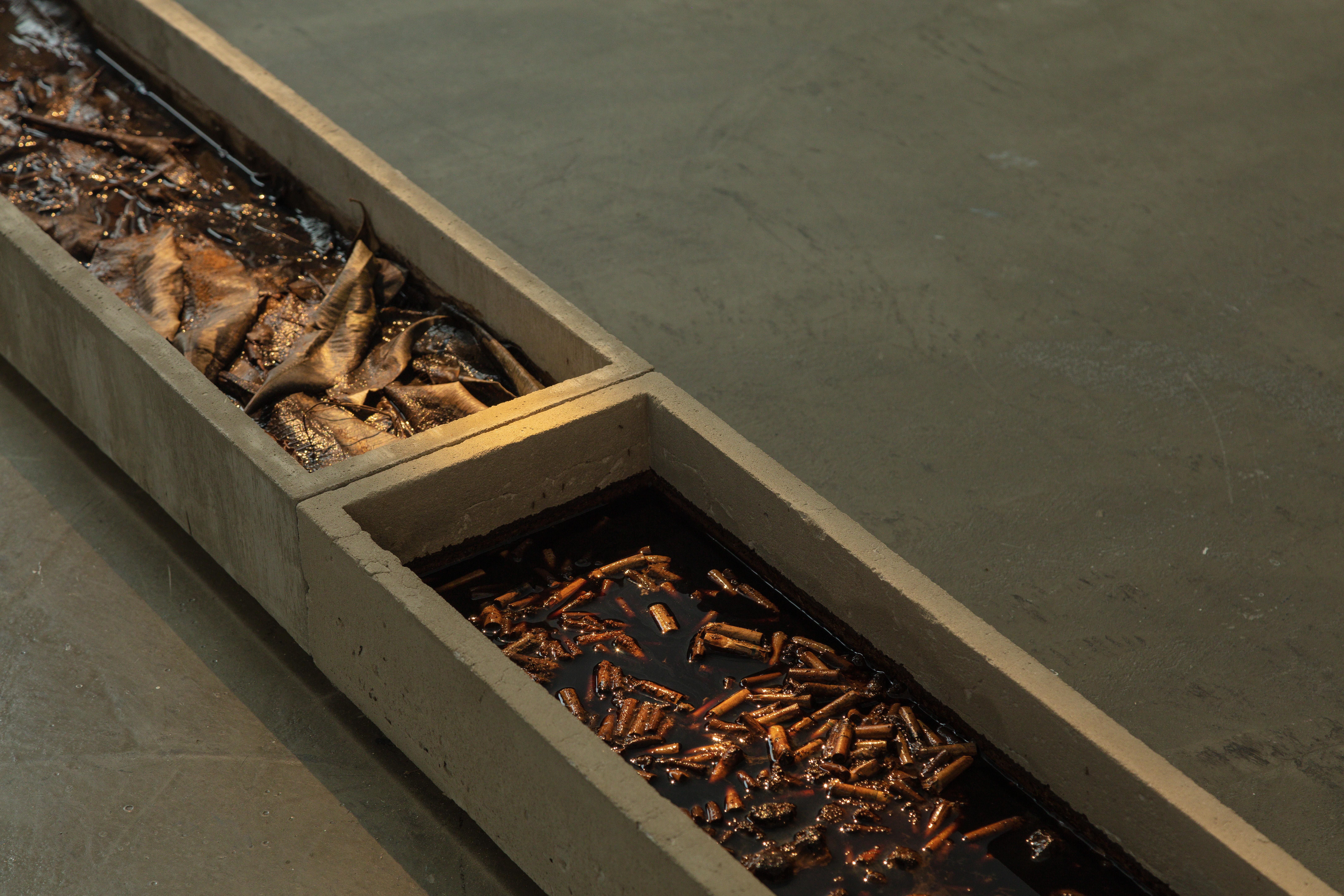
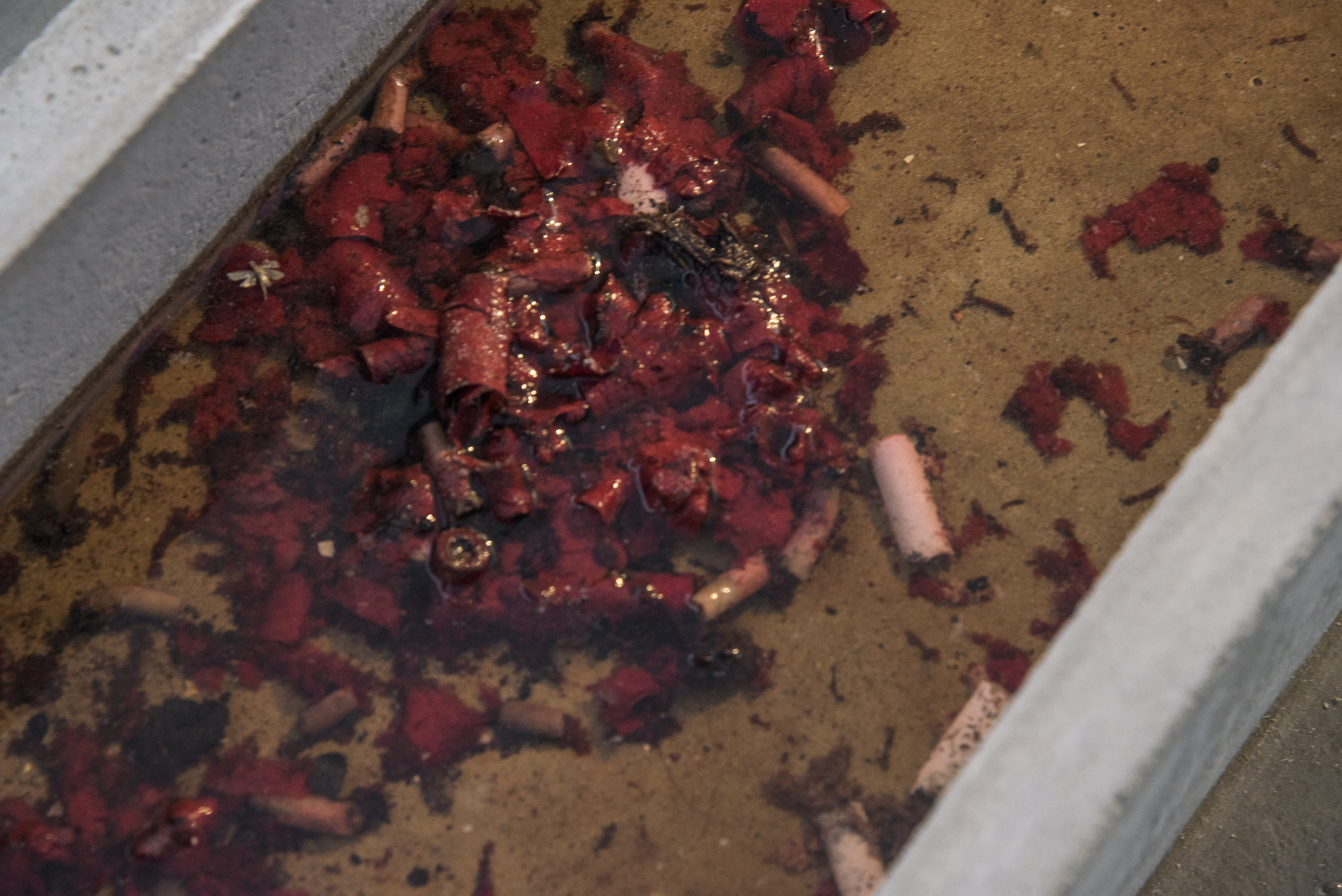
是誰、從哪裡來、往何處去,答非所問往往自取其辱。關於身體與自然斷裂的刺點,發生於一個日常午後,在一條小巷,途經一排老屋、清水寺、老榕樹、水井、幫浦和水溝,男友指著我腳底下說:「這是枋溪喔!」——水溝內是河流?城市中有河流?那是我每天都會經過的地方?即使被蒙上神秘建設、記上已自然消逝的註解,生活中不可見的河流卻開始以其蜿蜒巷道、高低地形、產業與地名等使我感受到祂。
近代的下水道工程始於工業革命後,為了改善衛生環境以及避免河川污染。台灣現代治水設施始於日治,而直到1960年代人口大量成長與都市化,才大規模規劃下水道系統。但多數的生活污水,仍舊沿著各式水管、溝渠匯入河流,使之成為人們已知的大排水溝。
施工現場是我遇到的破口。在兩處工地,遇見了兩條短暫成為可見的河流——枋溪和南河港。在施工的枋溪待了幾天,望著那工人沒打開的悠悠暗處,像被祂牽引似的想進去一探究竟。
Who? Where from? Where to? Questions like these often result in irrelevant answers that bring contempt upon oneself. A punctum, which saw the body breaking away from nature, manifested before me on one afternoon in a small alley. As we walked by a row of old houses, the Chingshui Temple, some old banyan trees, a water well, a pump, and a gutter, my boy friend then pointed towards under my feet and said, “This is the Fang Creek!” I was puzzled by the idea of a river running inside a gutter, a river stream inside a city, in a place that I pass by everyday. Although a mysterious structure has been placed over it, with inscriptions that have faded through time, I began to sense a divine presence because of this invisible river meandering through the alleyways, passing through the city’s up-and-down topography, and also the industry and location names associated with it.
Constructions for modern underground waterways began after the Industrial Revolution, with the objective of improving hygienic conditions and preventing rivers and streams from being polluted. Modern water management and infrastructure in Taiwan began during its Japanese colonial era. Large-scale underground water system was implemented in the 60s to accommodate the growing population and urbanization. However, most of the everyday wastewater is still now being discharged into rivers via various pipes and ditches, and people have grown accustomed to rivers becoming large gutters.
The construction site is the breach I encountered. At the two construction sites, I met two rivers that became visible for a short time — Fangxi and Nanhegang. I spent a few days in Fangxi where the site was under construction, looking at the dark place that was covered by the worker, and wanted to go in and explore as if being pulled by the divine presence.

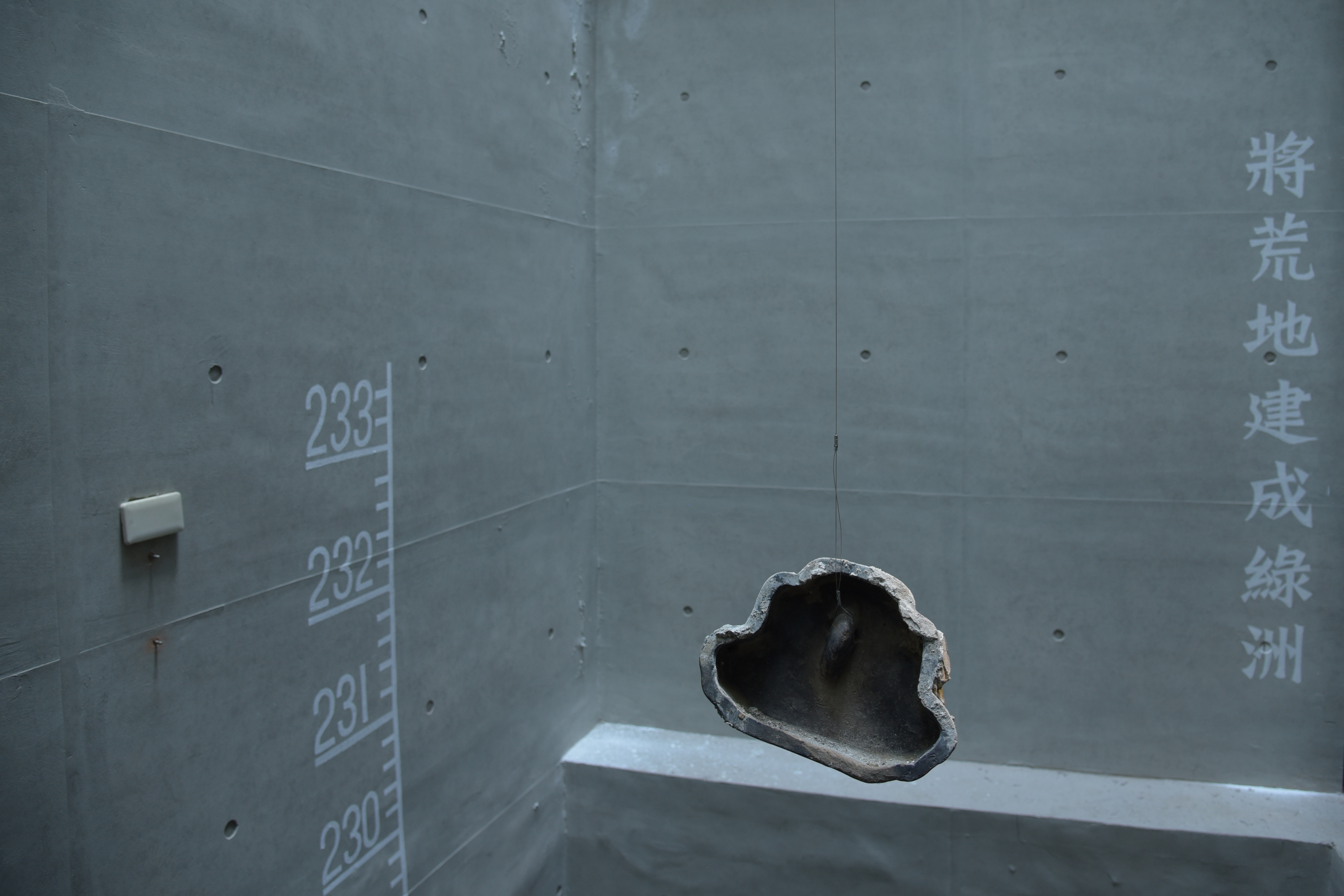

《將荒地建成綠洲》‘’Transform the wasteland into oasis ‘

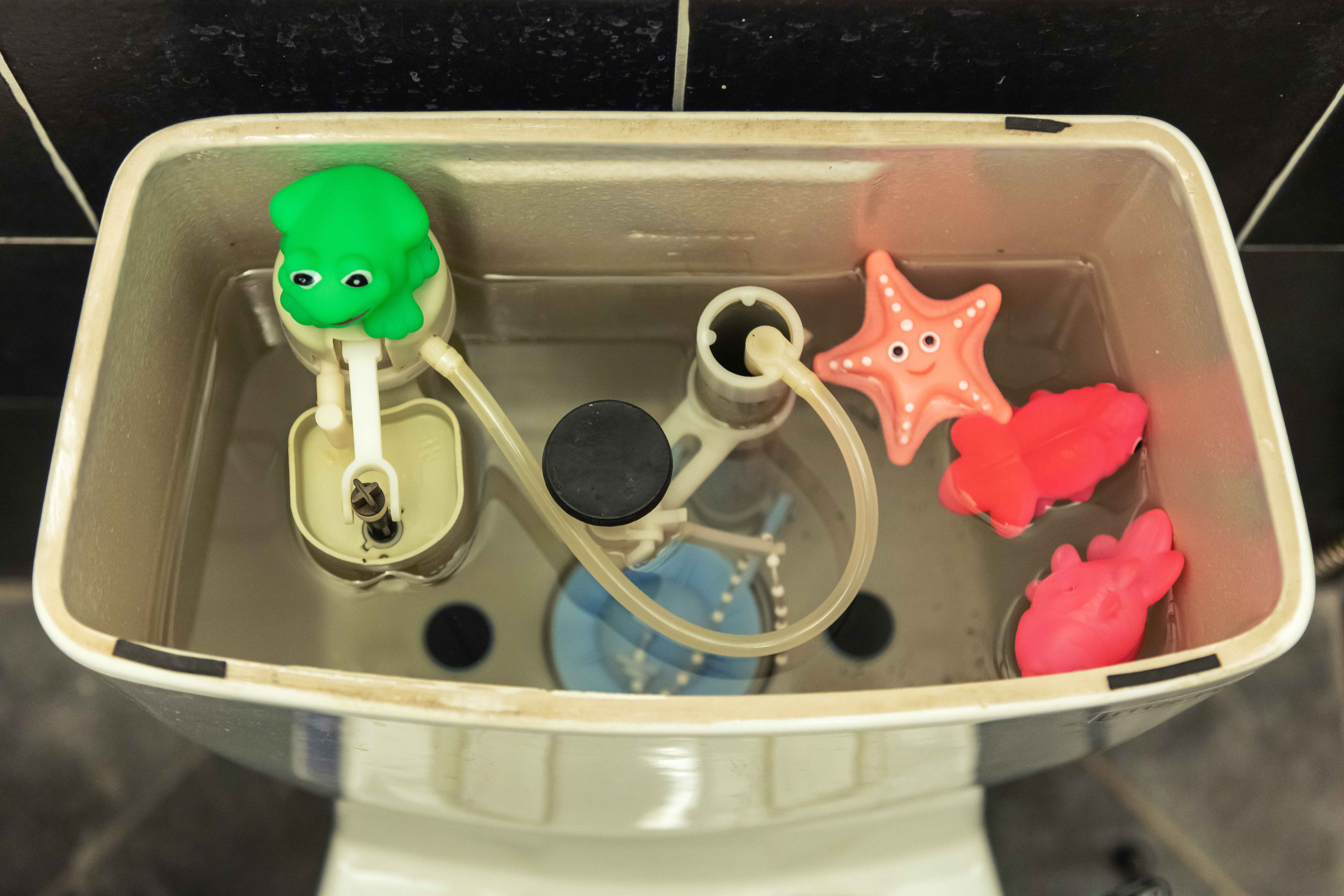
《
水庫→馬桶→河流》‘’
Reservoir→Toilet→River
‘’
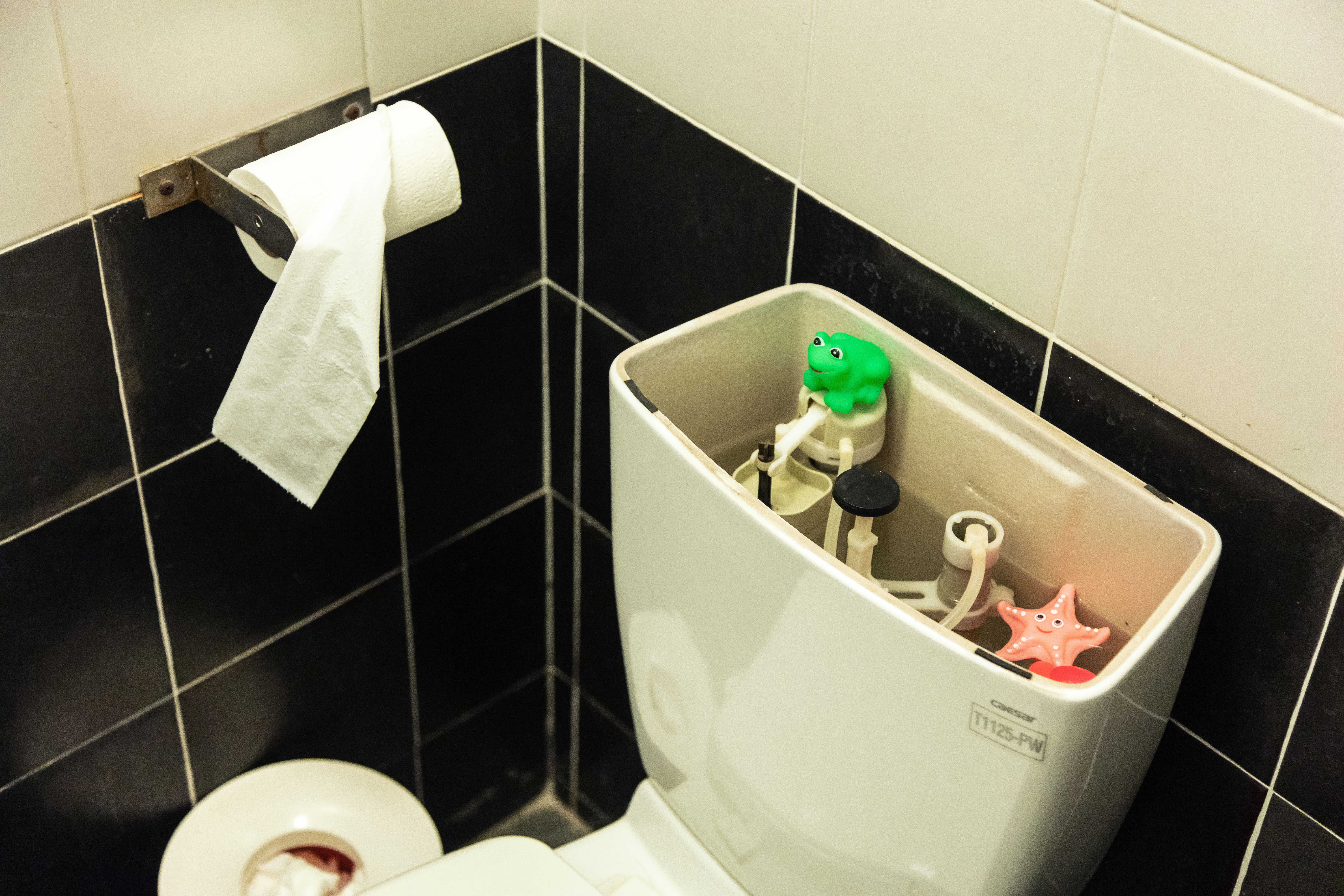


《逃出水管,滯留於老家陽台》
‘’ Escaping from the pipe, the water remained on the balcony of the childhood house ‘‘
‘’ Escaping from the pipe, the water remained on the balcony of the childhood house ‘‘
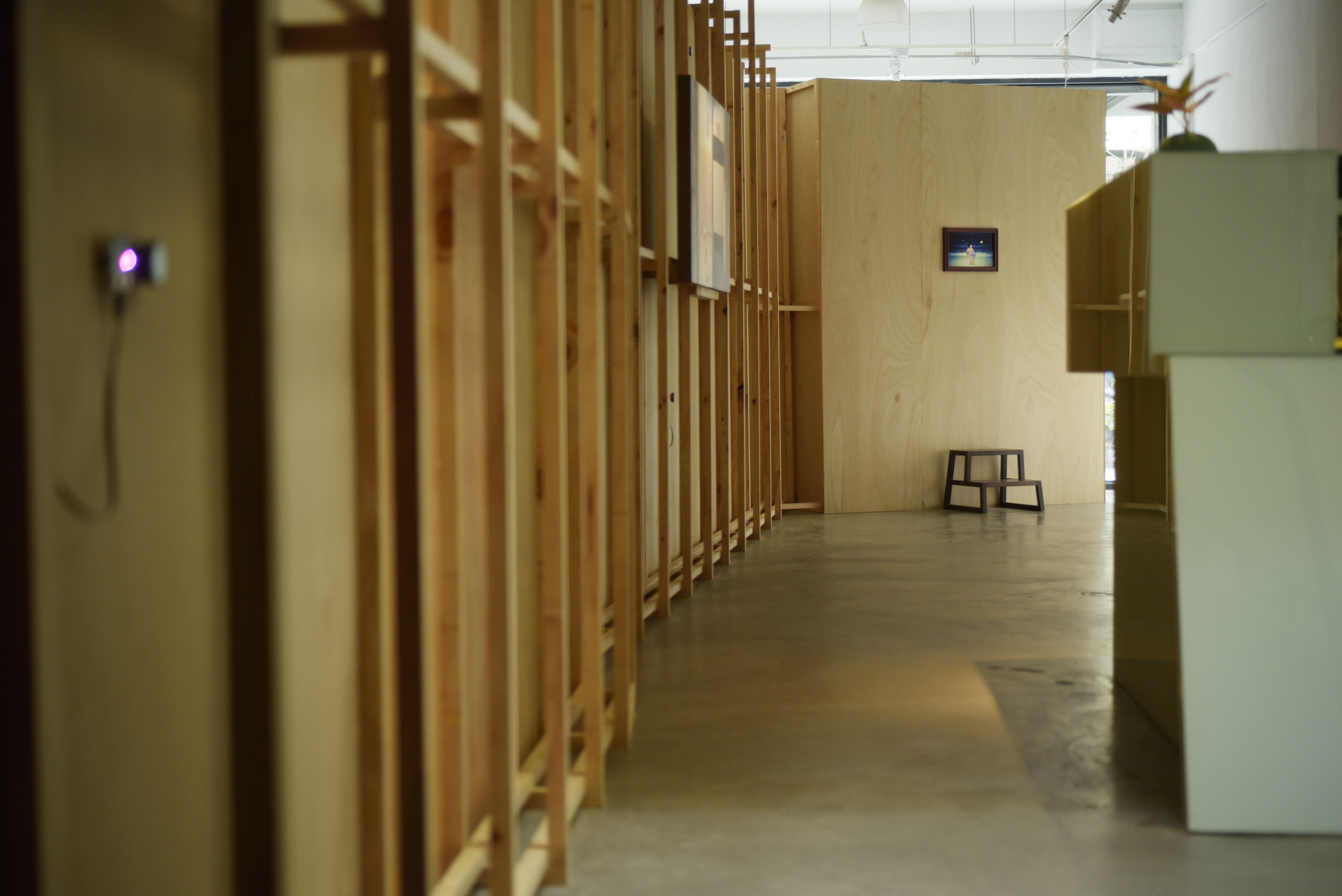
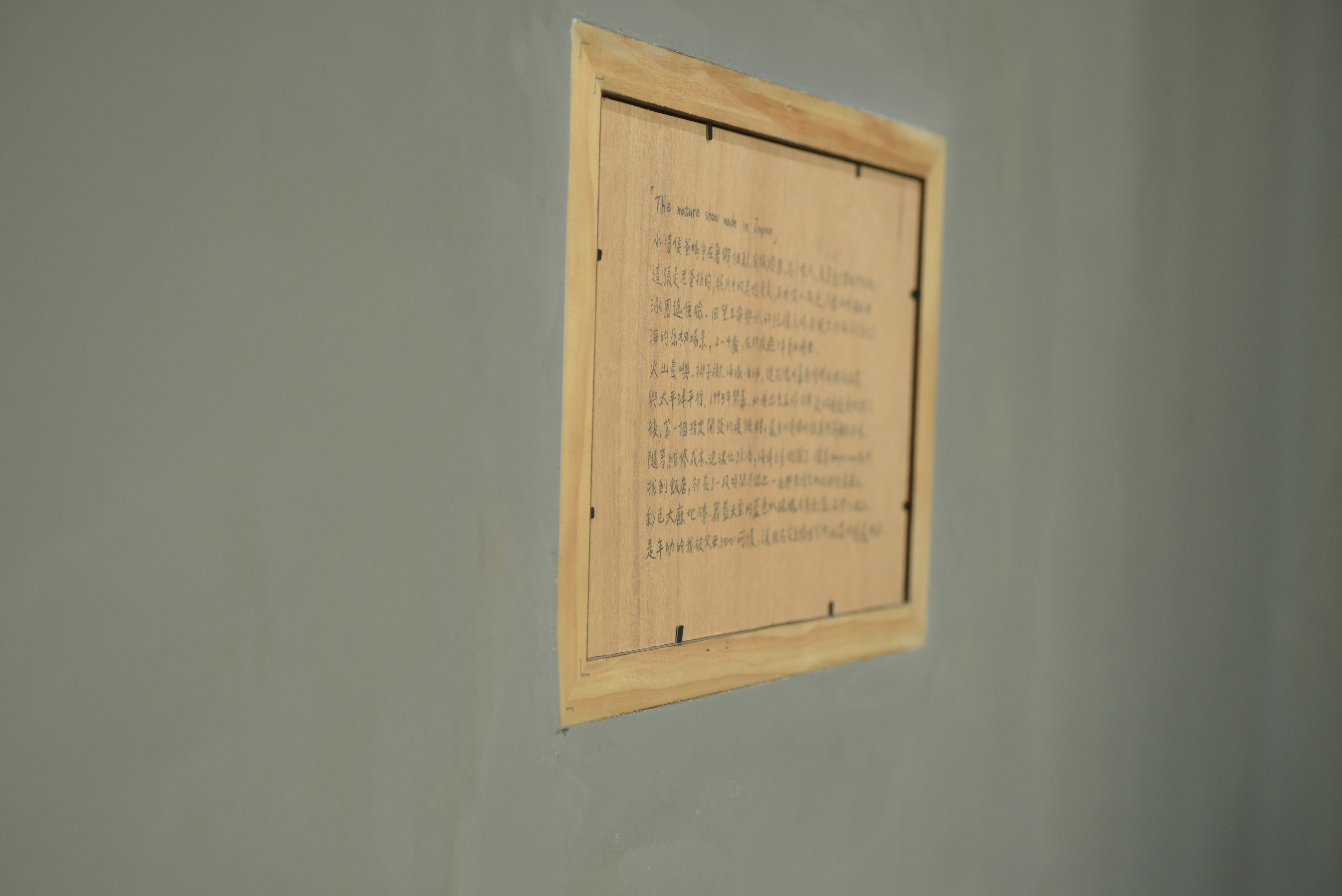
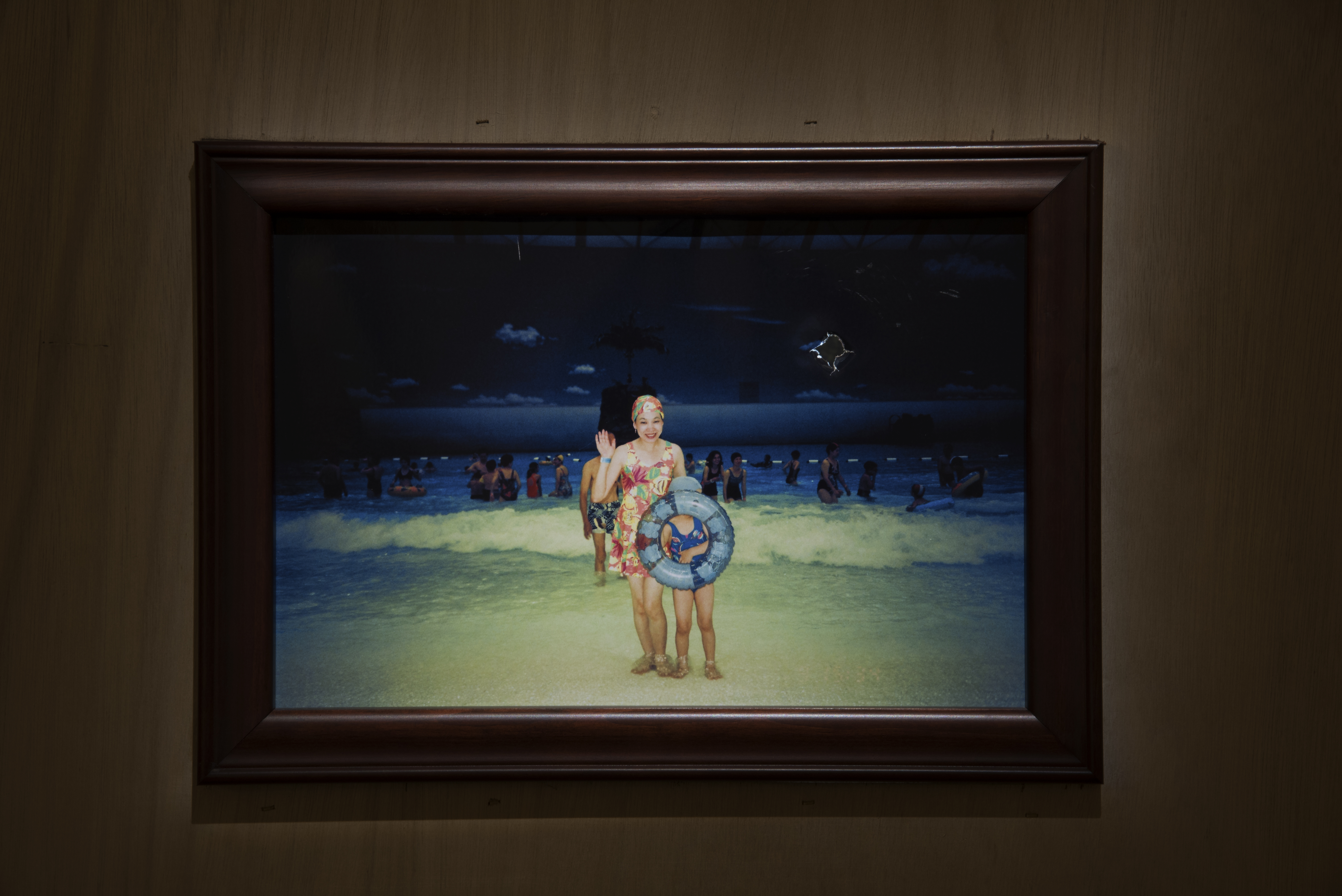
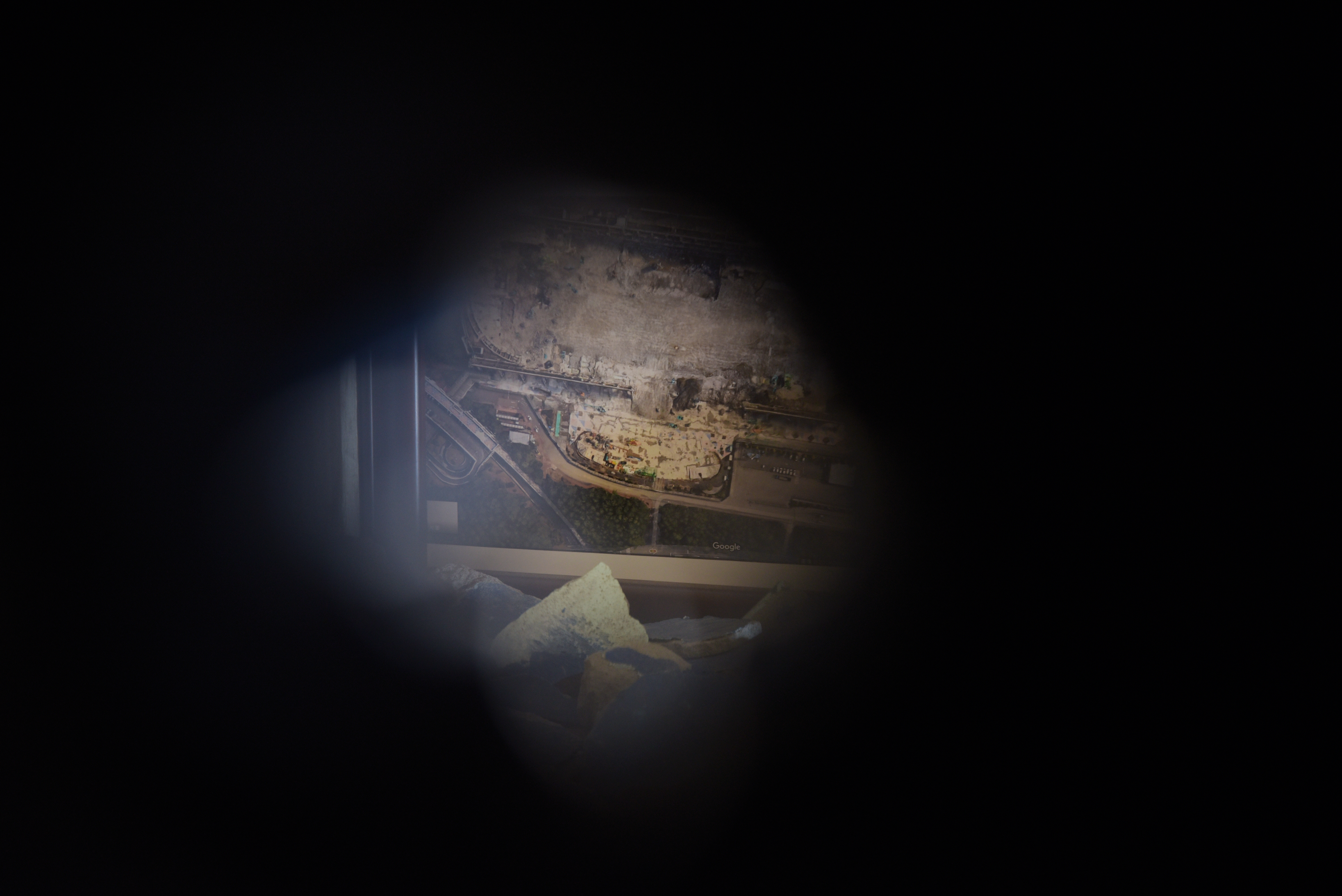
‘’
The nature show made in Japan.
‘’
若聖維克多山在塞尚正在畫的時候被逐漸挖空成為半屏山,或者被亞泥不斷的剷平,那該如何回望?於是,在膠著了三個月後與恐懼妥協,帶著相機與手電筒,我離開熟悉的地平線,從郊區和市區的縫隙之處爬下去,進入無明的所在。沿途來自四面八方匯入地底的水流聲,像瀑布般的佔據空間,還有肥皂、血水等無法判斷的氣味。眼前是污穢暗黑洞穴,似乎沒有盡頭,龐亂無序的電纜管線,我誤以為是大樹坍塌。蟑螂被嚇得到處亂竄,我則被生活的剩餘物質給嚇得難以相信——原來這是一條有名字的河。
回想過去生活與水流動的關係,自己曾誤以為城市的水都在水管和自來水公司裡,尤記得家裡陽台水管塞住時積水的情景;大學時住在烏山頭水庫旁,我直呼人間仙境,直到有天陷入乾枯期的淤泥中,在拼命撐起不斷往下沉的身體時,才想起這是沿著官田溪建設的。
在展場中,我試圖劃出一條線、類似路徑,沿著河走,辯證當代用水循環與我之間——水庫是使用水的上游、人的行為是使用水的中游、城市中的河流成為不可見的下游。童年記憶瓦解、青春自在崩毀,逃離單點透視的美好、戳破幸福浪漫的濾鏡、拋下衛生安全教條、穿越鋼筋水泥,走向海洋——那個記憶中的海洋,作為導遊的父親帶我去的日本九州宮崎海洋巨蛋,世界上最大的人造海洋——楚門戳破的蔚藍天空,藍色水泥塊外頭是出口,然而走出去,似乎還是同一個世界,但世界也不再是同一的。
If Mont Sainte-Victoire was gradually hollowed out to become a Banpingshan while Cézanne was painting, or was continuously leveled by the Asia Cement Corporation, how should we look back? Thus, after three months of stalemate, I compromised with fear. With a camera and flashlight, I left the familiar horizon, climbed down from the gap between the suburbs and the city, and entered the place of unenlightenment. Along the way, the sound of water flowing from all directions into the ground, occupying space like a waterfall, and there were also unknown smells like soap and blood that cannot be told. In front of my eyes, there was a filthy dark cave. It seemed that there was no end. I mistakenly thought it was the collapse of a big tree for the huge and disorderly cable pipelines. The cockroaches were scared and scurrying everywhere, and I was scared by the leftovers of life. It turned out that this was a river with a name.
Reflecting on the relationship between life in the past and moving water, I recalled that I once misunderstood the water that we get in cities all came from water pipes and the water bureau, and I would never forget the time when a water pipe got clogged and my balcony was swamped. I lived near the Wushantou Reservoir when I was in college and thought the place was heaven on earth. One day I was stuck in the mud at the bottom of the reservoir during a dry spell, and as I fought hard to pull up my sinking body, I was reminded that the reservoir was built along the Guantian River.
A line is drawn out in the exhibition space. This line resembles a route that follows a river, and it is an attempt at attesting the relationship between the cycle of how water is used in today’s time and myself, showing that the reservoir is at the upstream of water usage; human behavior is at the middle reach, and rivers running through the city have become the invisible downstream. As memories from my childhood crumble and my youth collapses, I escape from a single-sided view that only shows the good, shattering the filter that evokes bliss and wonder. Leaving behind the rules and regulations on hygiene and safety that I was taught, I push through the concrete jungle and venture out into the ocean— the ocean in my memory, the Miyazaki Ocean Dome in Kyushu, Japan, where my father as a tour guide took me, the world’s largest man-made ocean — the blue sky pierced by Truman, and there is an exit outside the blue cement block. However, going out, it seems it is still the same world, but the world is no longer the same.

【沿河Dwellin in The Invisibility】——個展Solo Exhibition
Date 2019 / 9/1 - 10/6, in Tainan,
絕對空間Absolute Space for The Arts
展覽完整影像連結
The video link of the exhibition